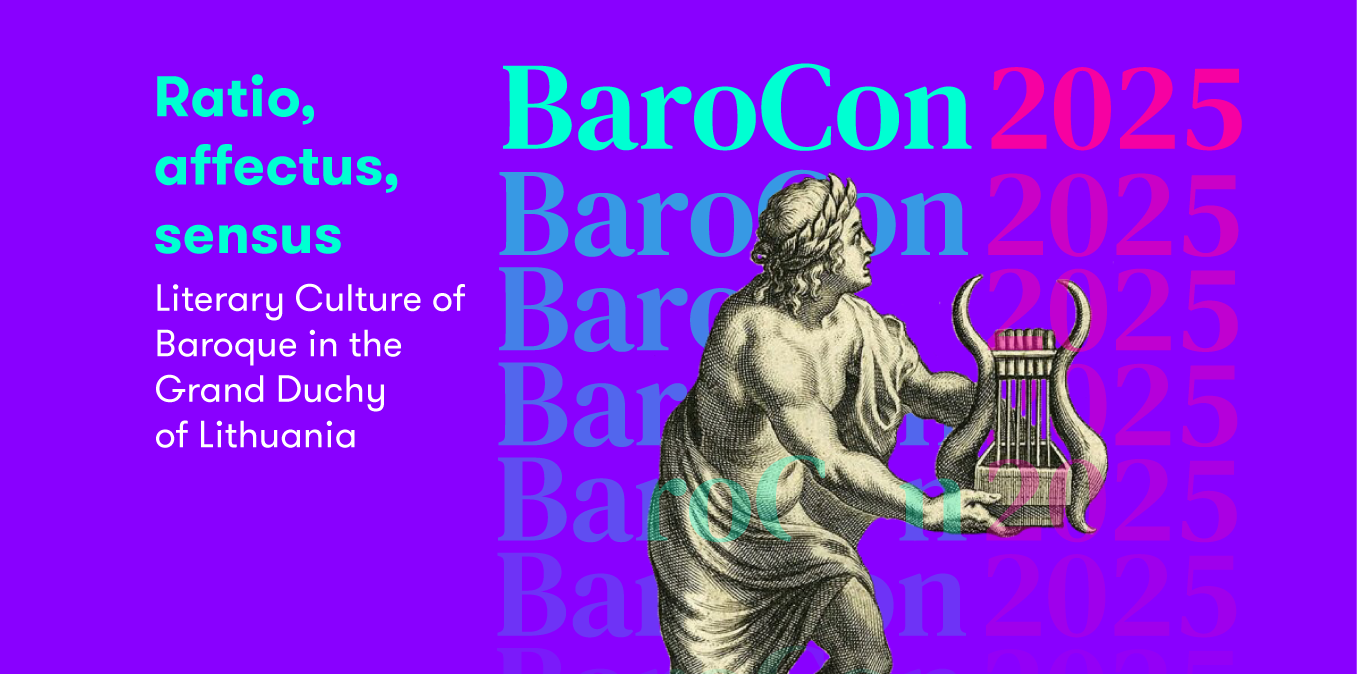Ratio, affectus, sensus: Literary Culture of the Baroque in the Grand Duchy of Lithuania
In 2025, we will commemorate the 400th anniversary of the first publication of Matheus Casimirus Sarbievius' most famous Latin poetry collection 'Lyricorum libri tres' (1625). This has led to 2025 being declared the Year of Baroque Literature in Lithuania. The eminent Jesuit neo-Latin poet of the Polish-Lithuanian Commonwealth, Sarbievius, has been hailed as the Christian Horace and the Sarmatian Horace. His theoretical thoughts on poetry and rhetoric are still highly regarded and have inspired new research on other concurrent themes and authors. This anniversary provides an opportunity to explore the extent and diversity of Baroque literary culture, which has seen a surge of interest in recent decades, both in the academic world and in popular culture. Therefore, the Institute of Lithuanian Literature and Folklore, together with the Faculty of Philology of Vilnius University, is organising an international academic conference "Ratio, affectus, sensus: Literary Culture of the Baroque in the Grand Duchy of Lithuania" on 25-27 September 2025 in the baroque city of Vilnius.
The aim of the multidisciplinary conference is to stimulate discussion on the literary culture of the "long seventeenth century" (from the end of the 16th century to the middle of the 18th century) in the Grand Duchy of Lithuania. This historical period, associated with dramatic changes and a general cultural crisis, is often described in contradictory terms and in constant tension between reason and senses, rigid structure and passions, classifications and impressions, etc. By embracing this contradiction, we invite an exploration of the theme in question through the lens of this dynamic interplay between reason (ratio), emotion (affectus) and the senses (sensus), which can be perceived in various genres of the period, such as poetry, biography, hagiography, rhetoric, private and public correspondence, and so on. The importance of the modern approach lies not only in what it can reveal about the Baroque in the Grand Duchy of Lithuania, but also about subsequent and contemporary literary culture, as scholars have demonstrated the continuing influence of a 'Baroque spirit'.
Event location
25–26 September the conference will take place at V. Krėvė (118) auditorium, Faculty of Philology
27 September the conference will take place at the Church Heritage Museum, Šv. Mykolo g. 9 (entrance from Maironio g. "Arkangelo konferencijų centras")
Keynote speakers

Ona Dilytė-Čiurinskienė
Senior Researcher, The Institute of Lithuanian Literature and Folklore
Prof Stephen Harrison
Professor of Latin literature, University of Oxford
Francis Young
Baroque Epic in the Grand Duchy of Lithuania: James Bennett’s 'Virtus dexterae Domini' (1674)
Francis Young
University of Portsmouth, UK
Baroque Epic in the Grand Duchy of Lithuania: James Bennett’s Virtus dexterae Domini (1674)
Keywords: Epic, Baroque literature, Neo-Latin literature, James Bennett, Grand Duchy of Lithuania
Virtus dexterae Domini (1674) is a Latin of poem of 751 lines in elegiac couplets about the Polish-Lithuanian victory over the Ottomans at the Battle of Khotyn (1673). The poem was publicly attributed to James Bennett, third son of George Bennett, the Scottish-Lithuanian Starosta of Kėdainiai (one of the Lithuanian commanders at the battle). However, given the poem’s length and the tight timeframe for its composition, James Bennett (who had only just enrolled at Vilnius University) may not be the poem’s true author. Virtus dexterae Domini is partly epic, and partly a panegyric in praise of each of the leading Lithuanian participants in the battle; it thus provides a bridge between earlier Lithuanian epics (such as Jan Radwan’s Radivilias (1592)) and the panegyrics, epinicia and naeniae of the 18th century. This paper argues that Virtus dexterae Domini embodies a kind of embryonic Lithuanian nationalism, by concentrating on the achievements of the Lithuanians in a battle jointly fought with the Poles, and by emphasising the Grand Duchy of Lithuania’s status as a patrician res publica where people of diverse backgrounds (including the Scottish Bennetts) could obtain noble citizenship – as well as by the use of the Latin language itself. Virtus dexterae Domini represents the peak of Lithuanian baroque epic, as well as pointing ahead to the emergence of later forms of Lithuanian national identity.


